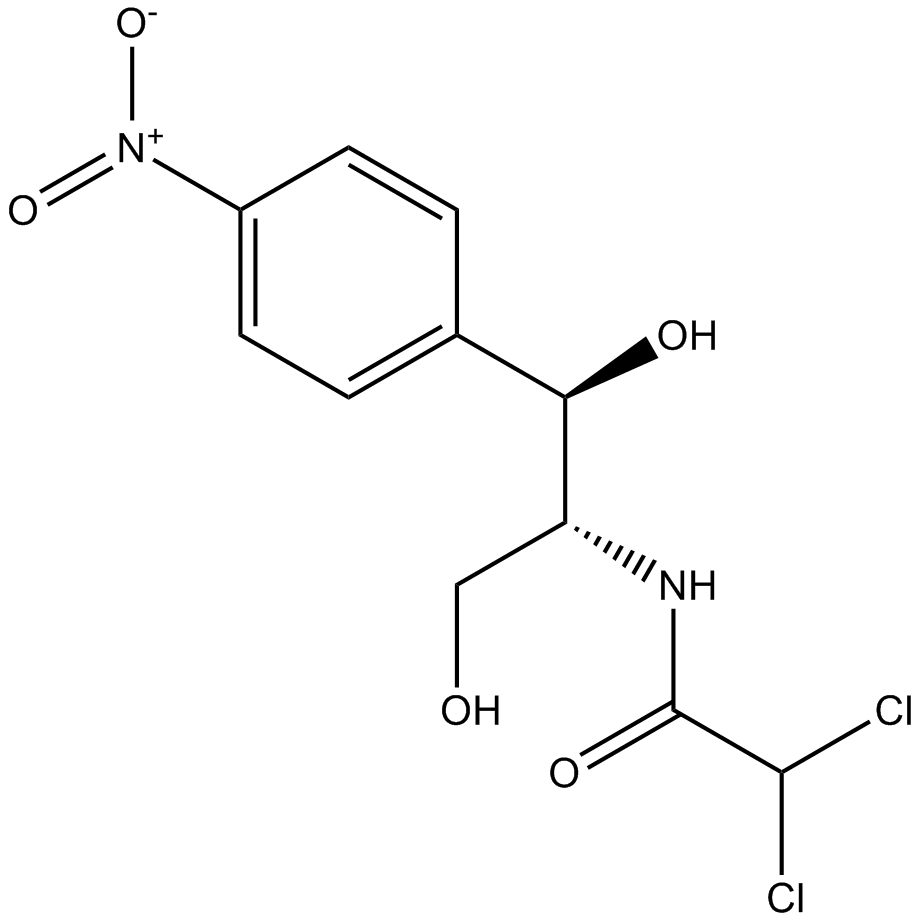Chloramphenicol |
| Catalog No.GC15185 |
An acetylated version of chloramphenicol
Products are for research use only. Not for human use. We do not sell to patients.

Cas No.: 56-75-7
Sample solution is provided at 25 µL, 10mM.
Chloramphenicol is a broad-spectrum antibiotic against bacterial infections.
References:
[1]. Jardetzky, O., Studies on the mechanism of action of chloramphenicol. I. The conformation of chlioramphenicol in solution. J Biol Chem, 1963. 238: p. 2498-508.
[2]. Wolfe, A.D. and F.E. Hahn, Mode of Action of Chloramphenicol. Ix. Effects of Chloramphenicol Upon a Ribosomal Amino Acid Polymerization System and Its Binding to Bacterial Ribosome. Biochim Biophys Acta, 1965. 95: p. 146-55.
Average Rating: 5 (Based on Reviews and 30 reference(s) in Google Scholar.)
GLPBIO products are for RESEARCH USE ONLY. Please make sure your review or question is research based.
Required fields are marked with *




















